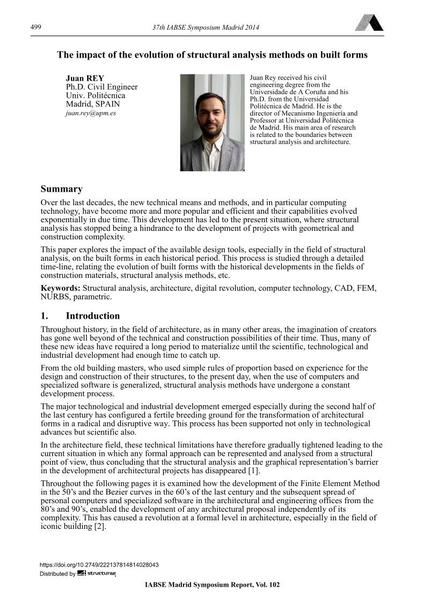The impact of the evolution of structural analysis methods on built forms

|
|
|||||||||||
Bibliographic Details
| Author(s): |
Juan Rey
|
||||
|---|---|---|---|---|---|
| Medium: | conference paper | ||||
| Language(s): | English | ||||
| Conference: | IABSE Symposium: Engineering for Progress, Nature and People, Madrid, Spain, 3-5 September 2014 | ||||
| Published in: | IABSE Symposium Madrid 2014 | ||||
|
|||||
| Page(s): | 499-506 | ||||
| Total no. of pages: | 8 | ||||
| Year: | 2014 | ||||
| DOI: | 10.2749/222137814814028043 | ||||
| Abstract: |
Over the last decades, the new technical means and methods, and in particular computing technology, have become more and more popular and efficient and their capabilities evolved exponentially in due time. This development has led to the present situation, where structural analysis has stopped being a hindrance to the development of projects with geometrical and construction complexity. This paper explores the impact of the available design tools, especially in the field of structural analysis, on the built forms in each historical period. This process is studied through a detailed time-line, relating the evolution of built forms with the historical developments in the fields of construction materials, structural analysis methods, etc. |
||||
| Keywords: |
architecture structural analysis FEM Parametric CAD Digital Revolution computer technology NURBS
|
||||
